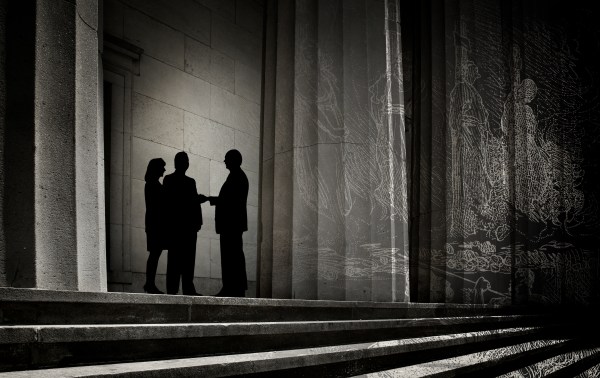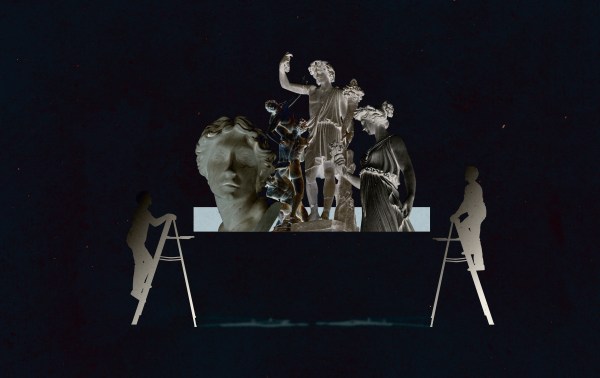Turn any article into a podcast. Upgrade now to start listening.
Premium Members can share articles with friends & family to bypass the paywall.
As of 2024, nearly half of young women in the United States—47 percent—between the ages of 25 and 34 held a bachelor’s degree. That is absolutely good news for young women. But for men in the same age group, the figure was only 37 percent: a 10-point gap. According to the Chronicle of Higher Education, in some states the gender gap is now wider than racial or ethnic gaps. A generation ago—in 1996—men and women were nearly even; about a quarter of each held bachelor’s degrees. The takeaway is this: Young women are choosing to go to college and to stay there. Men are not. In fact, millennial and Gen X men are increasingly telling their sons that college probably isn’t worth it. That shift should spark a reckoning—especially within higher education itself.
The ideological climate only makes the gap worse. A 2024 survey found that Gen Z men, ages 18 to 24, are leaning more conservative than liberal. Another survey published in December reported that “only 20% [of faculty] feel that a conservative would fit well in their department.” Taken together, the numbers paint a troubling reality: If most college-age young men lean conservative, and 80 percent of faculty don’t think conservatives belong in their departments, then young men are right to sense that college may not be the most welcoming of spaces for them.
As a professor of gender studies, I find this troubling. And the shooting of Charlie Kirk, whatever one thinks of his politics, underscored for me the broader breakdown of dialogue on our campuses.
It’s not insignificant that Turning Point USA—the conservative student organization Kirk helped lead—is growing rapidly on college campuses. Its message to students, especially to young men, is clear and simple: You belong, and your values matter. That presents quite the appeal for young men who might often see their ideas brushed aside in large lecture halls and campus-led activities, only to discover them lauded and strengthened in Turning Point’s online communities and campus chapters. When speaking of what he found valuable in Turning Point, one young man interviewed by the New York Times put it this way: “It was a relief to see that other people do have the same values and ideas as me. ... That gives me more reassurance that I’m not alone.”
But I suggest that actually building community requires more than a firebrand holding a microphone: It requires sustained presence and the willingness—by college administrators, faculty, and students.
The dangers of isolation are not new. Diplomat and historian Alexis de Tocqueville, in Democracy in America (1835), worried about this very thing. He warned that democracy grows fragile when people retreat into isolation. What he termed the doctrine of “self-interest … rightly understood” was not selfishness as it may at first sound, but rather the recognition that our own good is bound up with the good of others. By rendering small services to neighbors and communities, Americans sustained a shared life together. That means we can be different—sometimes very different—and still live within and aspire for a common project.
More recently, political scientist Robert Putnam took up the same concern in his now-classic Bowling Alone (2000), warning that civic life in America has frayed all the more as people stopped joining the institutions that once joined them together. “People divorced from community, occupation, and association,” he famously penned, “are first and foremost among the supporters of extremism.” When neighbors stop showing up for one another—when citizens (including students and faculty) stop seeing one another as people and instead merely as stand-ins for politics—democracy itself begins to erode.
We can see hints of this civic breakdown in Kirk’s own life. Although he came to campuses with Turning Point, he was not of any one campus. He never graduated from college; he dropped out of community college after one semester, and was, in fact, quite proud of this. Indeed, he wrote a book titled The College Scam: How America’s Universities Are Bankrupting and Brainwashing Away the Future of America’s Youth (2022). To be clear, he engaged in dialogue with students, and he was undeniably very effective at it. But he could never fully understand their paths—because he didn’t believe they had made a good choice and had never lived that choice himself. To Kirk, college was a scam, so this isn’t hyperbole to say. Nor is it to note that this left him as an outsider on college campuses, someone who spoke about the experience there but never inhabited it fully. It is perhaps one reason why, for some—even perhaps for another young man from Utah whose name I won’t mention in this article—he became less a human neighbor to talk through difficult topics with than a symbol of those topics themselves, less an embodied person, more personified politics. Symbols stir a crowd, for good and ill. They do not establish civic trust or real friendship.
This is one significant reason why higher education must do more to reach out to young men who are feeling left behind. It is a net good that campuses allowed Kirk to speak. But it would have been better had he found something worth staying for when he first attended—mentors to deepen and challenge his worldview, friendships to expand and refine it. It is telling that he dropped out after only one semester, and that his message to students was not cultivation but rejection of what he had experienced. Not only did he write The College Scam, but he produced and distributed plenty of videos on college campuses explaining to students why he felt college was a waste of their time. The same dismissive rhetoric regarding college echoes through other conservative commentators. Matt Walsh, another pundit popular with young men, has proudly declared on X: “I didn’t go to college and that has proven to be one of the smartest decisions I have ever made.” He’s within his rights to say this. But, absent a real college experience, how would he know?
Here’s the point: When the loudest media voices young men hear about higher education come from those who never found value in it—and who are now raising sons themselves—the gender gap in education, especially among conservatives, can only widen, and the chance for true civic formation slips further away. So I wonder again: How can higher education invite young men back to the table?
I think of Kirk meeting so many different college students and likely knowing few of them intimately, and of how many encountered his videos without ever knowing him in return. In one night, Kirk could meet upwards of 1,000 students—and this would be quickly repeated at other colleges. The discourse model, then, seems based more on ideas stacking against ideas, rather than people talking with people. And discourse that forgets we are in community together is not really discourse at all; it is simply repartee.
Kirk excelled at this, as do many esteemed college professors I know well. And as much as I think Kirk contributed to exposing the partisanship that has taken hold of college campuses, doing so in videos where he is touted as “destroying” liberal student ideas or speaking of students as “brainwashed” by the system does not show good will on his part. This is not to excuse his opponents; too often they failed to show him good will in return.
The viral “destroying” clips are not just bad-faith exchanges between a speaker and a student; they are symptoms of a much deeper assault on the very possibility of dialogue in higher education. Kirk would famously set up tables and invite questions, but he was mainly there to challenge the opposing viewpoints he knew he would encounter on college campuses—not to dialogue in earnest with those who raised them. And, yes, this might seem paradoxical, because many might claim the format that was his bread and butter—opponents speaking words to each other—is a prime example of “dialogue.” Yet speaking to prove a point alone is not back-and-forth dialogue; it’s apologetics.
Authentic dialogue occurs when we seek truth together with enough humility to listen to the person we're speaking to, and when we leave open the possibility of an ongoing relationship—even without agreement. And this goes both to Kirk as well as those who ventured up to the microphone to chat with him. When we speak only for clicks or to hear our own points “best” someone else’s, we lose sight of what it means to live together in community at all, to live as if our lives are bound up with one another. College should be the place where we learn to engage ideas not primarily through partisan lenses, but for the sake of seeking truth itself.
Discourse that forgets we are in community together is not really discourse at all; it is simply repartee.
Now, I suspect some of you reading probably share Kirk’s criticisms of higher education. It also bears mention here that trade schools and non-college career paths like military enlistment can also serve people very well. But leaders of four-year colleges ought to remind students of what only their form of higher education can offer. Liberal education forms judgment, curiosity, and resilience—the very goods we need for a strong republic. And, yes, it also pays: Workers with bachelor’s degrees still earn on average 50 to 80 percent more annually than those with only high school diplomas, nearly $1 million more over a lifetime.
But these are still not colleges’ most significant offerings. At its best, college gathers large populations of young people and turns them into neighbors—people who can listen as well as speak, who can argue without hatred, and who can join their lives to the common good. While viral clips showing college life today often showcase the worst classroom moments, the majority of classroom experiences like the ones I have belie these experiences entirely. When a student signs up for a course, neither they nor the professor knows who else will be in the room. That blessed unpredictability invites students to stay and learn alongside people they might never have chosen. In this sense, the classroom becomes a rehearsal space for civic life itself. It is not a chance to perform for “the other side” in a viral clip; it is the chance to forge sustained discourse with the neighbor who sits beside you, the one who challenges you, sometimes irritates you, and yet you still return the next week to wrestle with important questions regarding the life of the mind again and again. Professors may guide discussion (and this is one of my favorite roles) but it is the work of students together to test and hone their thinking, forming habits of discourse that hopefully later extend into school boards and city councils, neighborhood organizations and church groups, and even into political activism that is not performative but aimed at the common good. In this way, the classroom becomes not simply a site of learning, but a training ground for the civic imagination our democracy most needs.
Certainly, colleges can fail at nurturing this imagination. But I’d argue that our online echo chambers and viral “gotcha” clips have even less potential to cultivate such dialogue, and actually prod us to caricature each other. Colleges thereby have a unique opportunity, in both their physical form and their commitment to education, to do the opposite: To teach against caricature, and toward character.
George Washington himself put it plainly in his First Annual Address to Congress, in 1790: “Knowledge is in every country the surest basis of public happiness… and in proportion as the structure of a government gives force to public opinion, it is essential that public opinion should be enlightened.” That conviction has not lost its appeal. If we want a republic that is both strong and kind, we cannot afford to abandon a large swath of our young people—our sons as well as our daughters—to ignorance, loneliness, or cynicism. Education is not simply a private good to be hoarded or squandered. It is the cornerstone of our shared life as a nation. It is how we learn facts, and friendship for that matter—how to argue without hating, how to disagree without discarding one another. That is the invitation higher education must make again to young men as a whole, and particularly to young conservative men who have come to doubt whether they belong. And even for those young men who scoff at the very idea of neighborliness, the invitation remains. It is up to colleges, parents, and the nation writ large not to write them off, but to show them—through unencumbered openness and intellectual example—that another, more collegial way of living together in community is still possible.
Ultimately, such a renewal will take more than mission statements or recruitment drives by college administrators. It will take the slower, harder work of presence and mentorship—of seeing young men not as problems to fix but as people to welcome. It will require genuine hospitality. Charlie Kirk chose not to go to college, as is his right. But sometimes we stay even where we do not feel fully welcome—not to prove the other side wrong, but to show that we belong alongside one another despite our differences, and to give courage to others that they, too, can be part of this system. The absence of young men in higher education is not just their loss, but ours—for it means fewer neighbors to share in the work of learning and living together. For our republic will flourish only if we dare again to live not as rivals, but as neighbors.







Please note that we at The Dispatch hold ourselves, our work, and our commenters to a higher standard than other places on the internet. We welcome comments that foster genuine debate or discussion—including comments critical of us or our work—but responses that include ad hominem attacks on fellow Dispatch members or are intended to stoke fear and anger may be moderated.
With your membership, you only have the ability to comment on The Morning Dispatch articles. Consider upgrading to join the conversation everywhere.